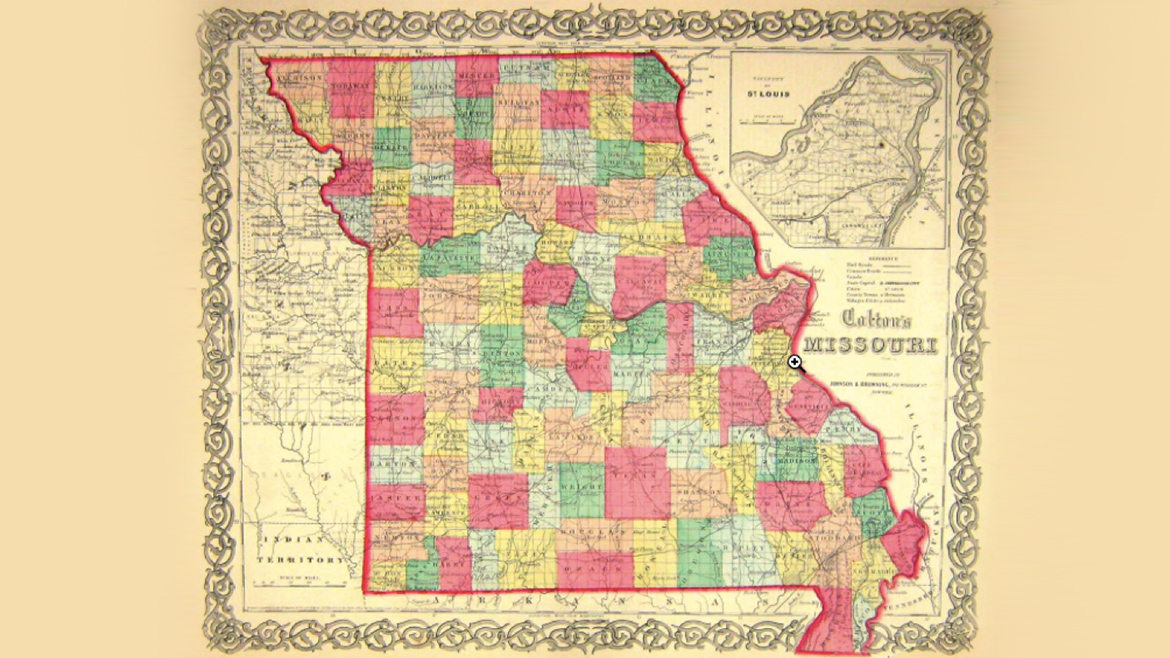CPS Will Never Be the Same

Each year, I like to thank my team for the work they do with a small gift. Last year, I relied on Zuni symbols, figurines carved from shell or stone. I gave our deputy superintendent, Dana Clippard, a wolf because of her fierce loyalty to the success of others. I gave our CFO, Linda Quinley, an eagle because of her ability to work with details while also understanding the big picture. Ben Tilley, our assistant superintendent for elementary education, received a bear, representing his drive to get the work done.
This year’s gift, an antique map of Missouri, symbolized that much has changed since Missouri became a state.
Throughout the past year, I have said that our community will never look the same. In 14 years, we have grown from a school district of 16,400 to 18,000 students. We’ve said that our budgets will never be the same. It costs our district $11,000 to educate each child, for which we are reimbursed $3,000 from the state. Each child we add is an $8,000 cost to the school district. As one business owner said to me, “It’s like planning a wedding for 100 guests and having 300 show up instead!”
In December, our board of education authorized a community vote, in April, of a 65-cent levy increase and a no-tax-rate bond issue, because they recognize that in order to be the best district we can be, we need to maintain the status quo of operating our buildings. We will need to end deficit spending. It’s not a question of simply cutting expenses; our growth makes that impossible. The board of education recognizes that we need to recruit and retain high-quality employees because parents have made it clear that they want a highly qualified teacher who will provide a nurturing environment for their children. The board recognizes that to be the best, we will need to invest in the programs that make us great: our Columbia Area Career Center; our Advanced Placement course offerings; our AVID program; our responsive programs for second language learners, homeless students, and students from economically stressed homes. Our community’s investment in its public schools is directly linked to its long-term economic vitality.
In five years, it’ll be the 2021-2022 school year and Missouri’s 200th birthday. With this, I began exploring the changes we’ve seen in that time.
In 1821, Missouri came into the Union as a slave state. As to not disrupt the balance of slave states versus free states, Maine was also admitted. The population of Missouri was 66,000, agriculture was the economic driver, and the major modes of transportation were horses, riverboats and railroad.
One hundred years later, in 1921, the 19th Amendment had just passed and women could vote. Even though a growing number of the state’s 3.4 million people were moving to the cities, agriculture, especially cotton, fueled the state’s economy. A network of highways had been developed, suggesting that cars and trucks would begin playing a bigger role in moving people and products, and people still preferred to communicate through letters.
As we consider what our state will look like in 2021, we must anticipate a few things. Communication will look different. Email, texts and video conferencing will likely still be present. However, we must expect that virtual reality (check out Sarah Hill’s StoryUp) will revolutionize how we see the world, and we can expect that tools like universal translators will make the world an even smaller place. And while highways will remain a major way to transport goods (we might expect drones to gain market share), the information highway will bring additional opportunities and challenges. Among those challenges is the schools’ responsibility in preparing students for a changing and unpredictable world. Careers in IT will most certainly continue to grow (including careers in programming and cybersecurity).
The map served as an important symbol. A symbol that much has transpired since Missouri became a state. Since 1821, rights have been conferred to those with few or none, and things have gotten better. Since 1821, issues of race and class, of gender and orientation, of religion and ability have improved. But issues surrounding each of these identities have also become more complex. The map is a reminder that our state was here before we were born and will be here after we are gone. Our job is to make sure that in 2121, someone will look back on what we accomplished as a community and marvel on how we improved the lives of our youth, our community and our economy. I know no better city than Columbia to make that so.


